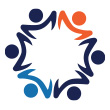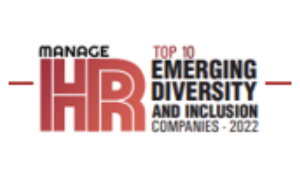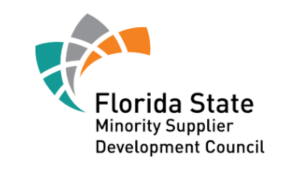Lack of DEI Expertise Holds Some Organizations Back.
When discussing Diversity, Equity, and Inclusion (DEI) strategy with organizational leaders still without one halfway through 2022, the reason they haven’t done so usually involves a lack of expertise within the organization. Leaders understand the overwhelming business case for DEI, they just don’t have certified DEI experts within their HR or Organizational Development departments qualified with DEI strategic planning.
To fully benefit from increased diversity, organizations must adopt a learning orientation and be willing to change the corporate culture and structure of power and influence.
Four Actions are Required for Leaders:
- Building trust and creating a workplace where people feel free to express themselves.
- Actively combating bias and systems of oppression.
- Embracing a variety of styles and voices inside the organization.
- Using employees’ identity-related knowledge and experiences to learn how best to accomplish the firm’s core work.
More than 2,200 CEOs and Presidents are pledging to ACTION supporting a more inclusive workplace for employees, communities, and society at large CEO Action for Diversity & Inclusion™ is the largest CEO-driven business commitment to advance diversity and inclusion in the workplace.
The business case for DEI is clear, compelling, and “case closed.”
7 Key Steps Towards Your Diversity, Equity, and Inclusion Strategic Plan
Organizations that want to build a diversity, equity, and inclusion strategy need to get buy-in, achieve alignment, and understand the perspective of all employees, including underrepresented groups.
What Your Strategic Planning Should Include:
- Shift the organization’s culture from reactive to proactive
- Share the commitment to DEI across the organization and at all levels
- Strive to create a psychologically safe workplace where authenticity is the norm
- Embed D&I, equity, and belonging in every function, department, and operation
- Identify the DEI stakeholders, which include your Board, leaders, potential job candidates, and employees
- Involve leadership beyond HR including all key business functions
Inclusive Leaders Group’s (ILG) DEI Strategic Roadmap partnership is a results-focused client engagement package. The 12-18-months partnership will advance your organization through the preparation, assessment, and commitment phases of the Inclusive Enterprise Framework during the first six months. After, we will continue meeting quarterly for a year to support your implementation team during the execution phase. Our approach to developing the Strategic Diversity, Equity, & Inclusion Plan is a step-by-step process. Following is a summary of the major steps:
- Gain Executive Commitment: The DEI Strategic Plan will only materialize and have meaning if your CEO and top leadership drive the principles as organizational values. There must be executive support because without it, implementing a DEI strategy usually begins strong but derails over time. Regular executive education such as training and coaching reinforcing the importance of the strategic plan to inclusive talent management, employee relations, innovation, and a culture of belonging can get everyone on board and aligned.
- Establish a Diversity, Equity & Inclusion Executive Council: The DEI Executive Council is the group that oversees developing and implementing a Diversity & Inclusion strategy. It ensures the organization’s focus is not lost, champions the concept of inclusion, and helps keep the effort on the right path over the long term. Membership should include senior leaders, management representatives from HR and each function, and diverse managers, supervisors, or staff members. This reinforces the principle that DE&I is imperative for everyone.
- Conduct Thorough Assessment of the Current Status of DEI: You won’t learn which strategic priorities to establish or how to move forward unless you know where you are at now. Data analysis is the only way to see the whole DEI picture by gathering the full gamut of diversity and inclusion metrics. Inclusive Leaders Group’s Diversity, Equity, & Inclusion (DEI) Assessment measures how effectively your organization fosters diversity and inclusion to make certain that all types of people are included in a supportive work environment. Our process provides deep insight into several common values and practices that support diversity in organizations.
-
Establish Strategic Priorities, Goals, and Objectives: With the assessment results combined with analytics gathered from other sources – like employee engagement surveys, supervisor input, and past grievances – establish priorities. Strategic priorities are supported by goals and objectives and are based on the organization’s experience.
-
Establish an Implementation Plan to Reach Goals: The implementation plan could include offering leadership and employee training, deciding who should participate in D&I initiatives focused on specific talent areas like recruitment of diverse employees, and offering opportunities for employees to share their experiences and perspectives. This is the step where you may decide to expand your digital communications to ensure you reach all employees when sharing information or where you develop a leadership dashboard that keeps track of progress for their area of responsibility.
-
Develop Data Standards and Benchmarks for Measuring Progress and Holding Leaders Accountable: While developing a Diversity Equity, & Inclusion Strategic Plan, also develop standards for measuring progress. It’s important to measure progress regularly. Annual reporting is inadequate. Success indicators along the path to developing a diverse and inclusive organization are factors like increased representation of minorities in leadership roles, and increased number of women and minorities participating in mentoring programs for career advancement.
-
Measure Results and Adjust Efforts as Necessary: Measuring outcomes is crucial to producing desired results. Outcomes inform about things like whether the leadership training is effective, if employees are satisfied with the D&I initiatives and if the organization is improving in the diversity, inclusion, and belonging arena. Measuring outcomes enables keeping the Diversity and Inclusion Strategic Plan in alignment. Don’t treat the D&I plan like a static plan that is developed and shelved, only to be revisited later.
This plan is designed to help your employees and your organization reach their full potential. Leverage your entire workforce to achieve your business goals, and mission with the right strategy.
If your company or organization is ready to take strategic and sustainable action to become a more inclusive workplace for Black employees talk to us about our Build a Racial Equity Culture Virtual Workshop for your leaders and teams. If you have not addressed Race and Anti-racism yet with employees since the racial reckoning of 2020, and you are unsure about committing to an educational workshop, a BRAVE Workplace Conversation about Race is the place to start.
 As CEO and Principal Consultant of Inclusive Leaders Group, LLC, Charlotte Hughes MS, CDP, SHRBP, CPLP brings a diverse background as an accomplished Workforce and Organizational Development and Diversity & Inclusion global thought leader and practitioner for several major Fortune 100 companies and one of the largest health systems in the U.S. Charlotte helps organizations develop their DEI strategy and provides DEI education for talent and organizational development.
As CEO and Principal Consultant of Inclusive Leaders Group, LLC, Charlotte Hughes MS, CDP, SHRBP, CPLP brings a diverse background as an accomplished Workforce and Organizational Development and Diversity & Inclusion global thought leader and practitioner for several major Fortune 100 companies and one of the largest health systems in the U.S. Charlotte helps organizations develop their DEI strategy and provides DEI education for talent and organizational development.Schedule a discovery discussion with Charlotte about building a racial equity business strategy and culture. Contact her on Calendly or this Contact Form.








